On 8 May, EURACOAL and the European Commission’s Research Executive Agency (REA) organised an event at the former Pozo Sotón coal mine near Oviedo in Asturias to promote the RFCS research programme calls and discuss future priorities. Several EURACOAL members attended including the acting EURACOAL president, Ing. Vladimír Budinský, who delivered a keynote address with a clear message: the RFCS is a successful research fund that now assists transformation in the coal regions and lays the foundations for new energy systems of the future. Referring to the RFCS technical guidelines, he called for the scope of the research programme to be broadened to support a great variety of projects in line with “a climate-neutral and environmentally friendly transition”, especially the repurposing of former mines and other coal-related sites even if research activities do not directly involve coal, the “black gold”.
Former European Commissioner for Energy, Andris Piebalgs, spoke on the new EU methane regulation, while the officer responsible for coal mine methane at the UNECE joined as a panellist. Meanwhile, Enrique Fernández, President of HUNOSA who kindly hosted the event, spoke on the transformation of Spain’s largest coal mining company. The event was also an opportunity for the partners of several RFCS projects to present their work in public.
REA concluded with an upbeat message to the coal sector, urging researchers to submit good proposals for the €800 million budget available through to 2027. All presentations are available at links in the report below and the event can be watched on YouTube: keynotes, hydrogen session and methane session (with concluding remarks).
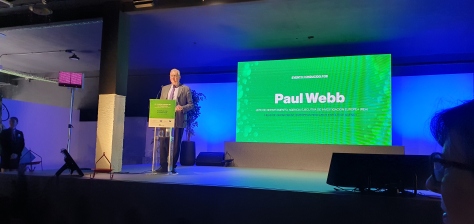
Keynotes
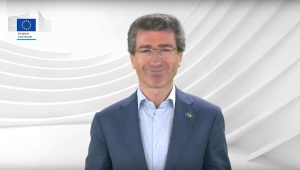 Marc Lemaître, Director-General for Research at the European Commission DG RTD, delivered a video message EU Research and Just Transition describing coal as a good example of how the EU can and must manage the green transition in a fair and just way. He stated that the European Commission’s recent communication on a climate target for 2040 – a proposed 90% emission reduction – would mean the phase-out of unabated coal by 2040. On the 2021 updates to the RFCS legal basis, he spoke of the now better fit with EU climate and energy policy, including the new and much larger “big-ticket” calls. He promised the coal regions that the Commission “will be at your side to make the best use of the numerous supporting tools at hand”.
Marc Lemaître, Director-General for Research at the European Commission DG RTD, delivered a video message EU Research and Just Transition describing coal as a good example of how the EU can and must manage the green transition in a fair and just way. He stated that the European Commission’s recent communication on a climate target for 2040 – a proposed 90% emission reduction – would mean the phase-out of unabated coal by 2040. On the 2021 updates to the RFCS legal basis, he spoke of the now better fit with EU climate and energy policy, including the new and much larger “big-ticket” calls. He promised the coal regions that the Commission “will be at your side to make the best use of the numerous supporting tools at hand”.
M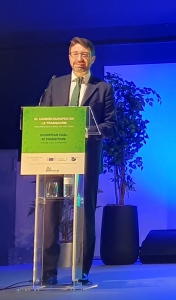 r. Enrique Fernández, President of HUNOSA, charted the transformation of his company from Spain’s most important coal company to an energy provider focused on renewable energy sources and the energy transition, providing economic activity and jobs in the areas it had mined in the past. He highlighted the already operating district heating networks using mine water combined with biomass boilers, and announced the construction of a 2.8 MW PV park, the largest in Asturias.
r. Enrique Fernández, President of HUNOSA, charted the transformation of his company from Spain’s most important coal company to an energy provider focused on renewable energy sources and the energy transition, providing economic activity and jobs in the areas it had mined in the past. He highlighted the already operating district heating networks using mine water combined with biomass boilers, and announced the construction of a 2.8 MW PV park, the largest in Asturias.
On behalf of EURACOAL, Senior Vice President Vladimír Budinský analysed recent trends in The coal industry across Europe and the outlook for coal. He noted the massive decline of coal demand in Europe driven especially by EU ETS allowance prices, and contrasted this with the expansion of coal use in many rapidly developing economies which are not subject to such high carbon prices. The recently introduced carbon border adjustment mechanism might eventually level the playing field for some industries, he remarked.
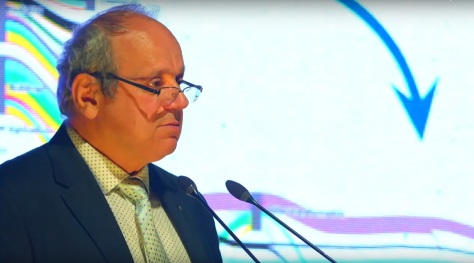
Mr. Budinský introduced the new EU methane regulation which will impose additional burdens on the coal sector, but left discussion on this important law to a later panel session. He made concrete suggestions for future RFCS priorities: more “big-ticket” projects and a wider scope for calls, even if this meant overlaps with other EU supported research programmes or initiatives. “So long as projects are helping the coal regions to prosper, then we, the coal industry will be supportive”, he concluded.
Hydrogen session (morning)
José Manuel Peréz Rodríguez, Head of Hydrogen Regulation and Government Affairs at EDP Renováveis, S.A., highlighted the role hydrogen can play in energy independence, the development of renewables, and the completion of the electricity market (see Hydrogen production in the context of a just energy transition and regional economic diversification strategies). However, he described the ongoing deployment challenges for hydrogen, as well as addressing hydrogen’s lifecycle emissions, making it economically competitive and fulfilling the extremely ambitious political targets for hydrogen. Appreciating the public finance available via instruments such as the Innovation Fund and the Hydrogen Bank, he presented transition projects at all five of the former coal plants owned by EDP on the Iberian peninsula: renewables, green hydrogen production, storage and supply, energy storage using liquefied air, molten salts and batteries, as well as grid flexibility services.
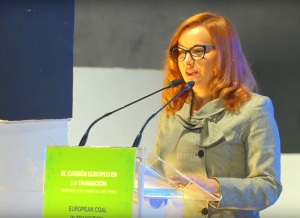
In their presentation of the €18 million Mine-to-H2 project, Prof. Alicja Krzemień, head of laboratory for risk assessment and industrial safety at the GIG National Research Institute and Yago Somoano Rodríguez, head of the innovation department at HUNOSA, underlined the project’s potential for sector coupling and a just transition (see MINE-TO-H2 – Repurposing a former coal mine: Green hydrogen for the transport sector using the circular economy and coupled with the heating sector). They explained how the repurposing of a closed coal mine and its water management system for green hydrogen production would link to an existing geothermal plant, a PV park at a former open-pit coal mine, a storage and distribution facility for hydrogen at 500 bar, tanker truck transport (or “virtual hydroduct”), a hydrogen refuelling station for a prototype hydrogen bus, hydrogen injection into the fossil gas network, and training/reskilling programmes for former coal mine workers.
In the panel discussion, María Lorenzo Conto, Director for energy and business development at HUNOSA, called for better connections between the different areas of energy transition: renewable energies, geothermal, CO2 capture projects, with hydrogen acting as a bridge. Luis Bausela Sanchez, Business Development Director at Duro Felguera, added the regional angle, praising the steel, fertiliser and engineering sectors in Asturias, as well as its infrastructure and large utilities such as EDP which together make it an ideal location for hydrogen deployment. He argued for smaller hydrogen projects (<10 MW), as the economic conditions for larger projects were not yet favourable. Miguel Ángel Alonso, Director of Engineering at ALSA, pleaded for technology neutrality to allow the full deployment potential of hydrogen in the transport sector using fuel cells and e-fuels. Juan Villar, Managing Director for gas distribution at NORTEGAS, argued in favour of guarantees of origin to allow a blend of hydrogen and LNG for residential heating.
Jürgen Tiedje, Head of Unit E3 and responsible for the RFCS research programme at the European Commission DG RTD, joined remotely to stress that while Horizon Europe no longer supported coal research, the RFCS would continue to focus on safety, repurposing of coal mines and related assets, and methane emissions. On hydrogen, he stated that it is no panacea and underlined the importance of a competitive price for green hydrogen. All energy technologies would remain relevant, he said and recalled successful transformation projects in Asturias including geothermal, energy storage at former coal-fired power stations, the co-firing of biomass in coal plants and, in the future, small modular reactors.
Dr. Fumero, as moderator, asked all speakers for their RFCS priorities. Answers focused on allowing small projects, matching proposals with requirements, and taking account of ambitious hydrogen targets that would take time and patience to reach. Panellists also suggested that the RFCS should support OPEX costs as hydrogen was otherwise uncompetitive. Mr. Tiedje replied with three points:
- Awareness of the goal that coal for power generation should be phased out by 2040.
- New debates on EU competitiveness in light of the European Green Deal during the next Commission.
- Making best use of new knowledge acquired in projects requires better collaboration with industry.
Methane session (afternoon)
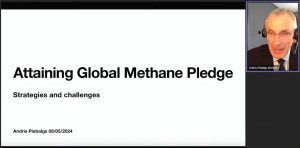 After the European Parliament and Council approved the EU methane regulation originally proposed by the Commission in 2021, it will shortly enter into force. Andris Piebalgs, Chair of the UNEP International Methane Emissions Observatory (IMEO) and a former European Commissioner for Energy, used his presentation to call for ambitious action to curb methane emissions (see Attaining Global Methane Pledge – strategies and challenges). He described IMEO’s “revolutionary approach to methane data”, integrating on-site measurements from companies, research and national inventories with satellite data to create a public, global dataset, an annual methane report and a methane supply index. He also presented MARS which uses satellite data to detect and attribute large methane emissions and notifies stakeholders via the IMEO. He welcomed the new EU methane regulation, highlighting the five upcoming delegated acts and three implementing acts still to come.
After the European Parliament and Council approved the EU methane regulation originally proposed by the Commission in 2021, it will shortly enter into force. Andris Piebalgs, Chair of the UNEP International Methane Emissions Observatory (IMEO) and a former European Commissioner for Energy, used his presentation to call for ambitious action to curb methane emissions (see Attaining Global Methane Pledge – strategies and challenges). He described IMEO’s “revolutionary approach to methane data”, integrating on-site measurements from companies, research and national inventories with satellite data to create a public, global dataset, an annual methane report and a methane supply index. He also presented MARS which uses satellite data to detect and attribute large methane emissions and notifies stakeholders via the IMEO. He welcomed the new EU methane regulation, highlighting the five upcoming delegated acts and three implementing acts still to come.
Artur Badylak, Director of demethanisation and energy management at JSW, and Aleksander Wrana, a research assistant at the GIG National Research Institute, presented REM: A “big-ticket” RFCS project on the reduction of methane emissions from post-mining goafs. Mr. Wrana explained that the REM project responds to the EU methane regulation to better monitor, manage and use methane emissions from coal mines as part of a mitigation strategy that includes a solid business model. He noted that its budget of €21 million was the largest coal-related project supported by the EU, with an RFCS share of over €10 million. Mr. Badylak highlighted the importance of REM as part of JSW’s demethanisation strategy which aims to contribute to the company’s goal of climate neutrality by 2050 and a 30% reduction in GHG emissions by 2030 c.f. 2018. The REM project should help increase methane drainage efficiency from 30% to 50%, with at least 95% use of drained methane. JSW plans to install 60 MWe of gensets running on mine methane, he concluded.

The panel discussion, moderated by EURACOAL’s David Bonson-Hesener, began with a short presentation by Chiara Giamberardini, an economic affairs officer at the sustainable energy division of the United Nations Economic Commission for Europe or UNECE (see Coal Mine Methane and Just Transition). She described her organisation’s work on advice and capacity building related to coal mine methane and invited participants to consult UNECE best practice guidance documents: Effective Methane Drainage and Use in Coal Mines (2nd edition 2016), Effective Methane Recovery and Use from Abandoned Coal Mines (2019), Effective Management of Coal Mine Methane at National Level: Monitoring, Reporting, Verification and Mitigation (2021) and the upcoming report on Ventilation Air Methane (VAM) Processing (planned for mid-2024).
Vlad Păsculescu, the head of laboratory for international projects and co-operation at INSEMEX, explained the advantages and disadvantages of satellite monitoring for methane emissions monitoring and reporting. He stated that the method is useful for remote areas, has a high frequency of measurement and can be integrated with other emissions data, but cautioned that it needs to be complemented by other ground-based methods for verification.
Mr. Badylak described some technical problems his company faces to comply with the upcoming EU methane regulation. He explained that the regulation imposed a 5% measurement accuracy to be met by 2025 which is hard to reach with currently installed measuring devices. He added that ventilation airflows at JSW mines are typically 10 000 to 28 000 m3/min with a methane concentration of 0.1%-0.7% and no economically justified way to use this methane. Without financial support, it would be impossible to construct installations to use ventilation air methane (VAM), he concluded.
Prof. Pedro Riesgo Fernández of the University of Oviedo where he teaches business and mining, stressed that VAM is intimately related to mine safety and that existing VAM technologies work at methane concentrations above 1% which puts them in direct conflict with mine safety priorities. Here, he called on the RFCS to support further research to overcome these challenges.
Concluding remarks
Dr. Fumero (right) considered EU policy on decarbonisation as a process that cannot be stopped, while acknowledging that any negative social and economic impacts should be mitigated. He noted the hydrogen panel’s message on the need for RFCS support to cover both CAPEX and OPEX costs, as well as support for more small projects. On methane, he suggested that EU regulation should serve as best practice for the rest of the world. Mr. Budinský (left) had spoken earlier on the dichotomy between EU policies and those of its global competitors, as well as on future RFCS call priorities, but in closing the event, he wished participants a fruitful networking time in Oviedo.



